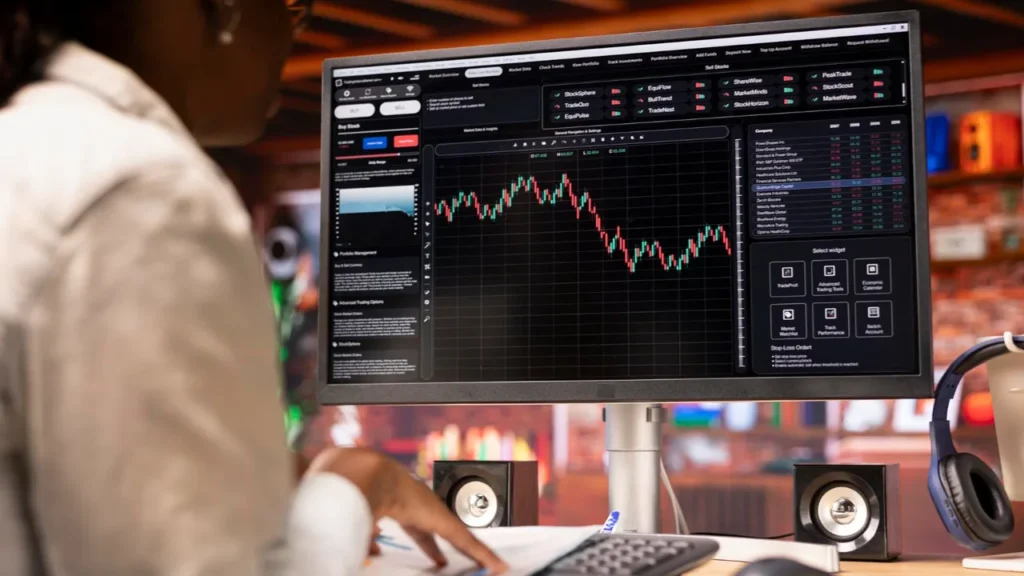Global proprietary trading firm Tower Research Capital is quietly reshaping how quantitative traders join its ranks. Instead of limiting opportunities to internal hires, the company is now offering hedge-fund-style partnerships that give independent trading teams access to Tower’s resources, capital, and technology—without forcing them to give up their autonomy.
A New Model for Quant Collaboration
Traditionally, top hedge funds attract experienced quants and portfolio managers through Separately Managed Account (SMA) structures. These deals allow external teams to manage their own trading strategies while leveraging the fund’s capital and infrastructure. Tower’s new approach borrows from that playbook but redefines it for the world of proprietary trading.
Rather than setting up formal SMAs, Tower offers what it calls a Software Vendor Agreement (SVA). Under this structure, an external quantitative team retains full ownership of its intellectual property and algorithmic models while gaining access to Tower’s institutional-grade trading environment. In return, Tower provides funding, execution technology, and operational support, sharing in the profits generated by the team’s strategies.
Inside the Software Vendor Agreement
The SVA model gives independent quants a plug-and-play framework that accelerates their path to trading at scale. Instead of raising capital, building infrastructure, or managing compliance and operations, they can focus entirely on research and execution. The arrangement includes:
- Access to global markets: Teams can deploy strategies across asset classes and regions using Tower’s existing exchange connectivity.
- Institutional infrastructure: Risk systems, data feeds, and post-trade services are integrated from day one.
- Capital backing: Tower allocates its own proprietary capital to fund the team’s models.
- Profit-sharing: Earnings are split under pre-defined terms, aligning incentives for both sides.
This approach minimizes administrative overhead for both parties. Tower avoids the complexity of full internal onboarding, while external teams enjoy entrepreneurial freedom without the costs of launching a standalone fund.
Why Tower’s Model Is Different
Unlike hedge funds, which manage client money under strict regulations, proprietary trading firms like Tower trade exclusively with their own capital. This key distinction allows Tower to operate with greater flexibility, faster decision-making, and reduced compliance burdens. The result is an efficient partnership structure that maintains institutional rigor but without the red tape.
By giving external teams their own “mini-franchise” under the Tower umbrella, the firm can diversify its trading strategies and attract a broader range of quant expertise. For ambitious traders and researchers, it’s a hybrid opportunity—part entrepreneurship, part institutional collaboration.
Blurring the Line Between Hedge Funds and Prop Firms
The boundaries between hedge funds and proprietary trading firms have steadily eroded. Many prop firms now engage in strategies once exclusive to hedge funds, from medium-frequency trading to statistical arbitrage and systematic macro. Meanwhile, hedge funds increasingly pursue faster execution and technology-driven alpha generation once associated with high-frequency shops.
Tower’s adoption of the SVA model reflects this convergence. The firm now supports more than ten external trading teams under such agreements, and its global network spans over a dozen offices with more than a thousand professionals. The goal is clear: to build a dynamic, multi-strategy ecosystem where innovation and autonomy coexist.
Benefits for Independent Quant Teams
For quants considering whether to join a large firm or start independently, Tower’s structure offers a compelling middle ground. Key advantages include:
- Speed to market: Teams can launch strategies within weeks rather than months or years.
- Lower operational risk: Tower handles connectivity, exchange memberships, and clearing.
- Full IP ownership: Developers keep their proprietary models, ensuring creative freedom and long-term value.
- Performance-based upside: Profit-sharing terms mirror hedge-fund incentives without investor constraints.
For Tower, this approach unlocks access to niche quantitative strategies and global talent without ballooning internal headcount or cost structures. It’s a scalable model that supports growth and innovation simultaneously.
Strategic Motivations Behind the Shift
The quant trading landscape is becoming increasingly competitive. As markets mature and alpha becomes harder to find, attracting exceptional talent and novel models is essential. Tower’s hybrid recruitment strategy positions the firm as a magnet for top performers who value both autonomy and institutional backing.
Several broader industry trends support this move:
- Rising infrastructure costs: Building a new trading operation from scratch now requires multi-million-dollar investments in data, risk systems, and exchange access.
- Tightening regulations: Starting a hedge fund involves heavy compliance costs, while prop-firm partnerships allow greater agility.
- Global talent mobility: Experienced quants are seeking flexible models that reward performance without bureaucratic constraints.
- Market volatility: Renewed volatility across asset classes has created rich opportunities for systematic traders who can scale quickly.
Challenges of the Model
Despite its appeal, the SVA framework isn’t without challenges. Integrating external teams into a prop-firm environment requires strong risk management, operational oversight, and cultural alignment. Each team’s technology must interface securely with Tower’s systems, and consistent performance monitoring is essential to maintain discipline across the firm.
External teams also need to adapt to Tower’s execution protocols and reporting standards. While the model allows independence, it still operates within a centralized risk framework designed to protect capital and maintain compliance with exchange rules.
Preparing for the Next Phase
Industry sources suggest that Tower may eventually expand beyond purely proprietary trading by launching a regulated asset-management arm. Such a move would allow the company to manage external capital while continuing to support its prop-style operations. If realized, this evolution could mark one of the first large-scale integrations of prop-trading and asset management under a unified structure.
Regardless of future plans, Tower’s approach to quant recruitment highlights a larger trend: the move toward flexible partnerships that combine entrepreneurial autonomy with institutional strength. For rising quant teams, it presents a new path to scale without surrendering ownership or control.
The Future of Quant Recruitment
In an era where data, speed, and innovation define success, firms that can balance freedom and infrastructure are best positioned to thrive. Tower’s model represents a new chapter for proprietary trading—one that attracts elite quant talent through collaboration rather than traditional employment.
As more firms explore similar frameworks, the future of quantitative finance may look less like a hierarchy of employers and more like an ecosystem of interconnected teams sharing technology, capital, and ideas. For Tower Research, that ecosystem has already begun to take shape.
Conclusion
The evolution of Tower Research quant recruitment marks a pivotal shift in how trading talent aligns with capital and technology. By bridging the gap between independence and institutional backing, Tower has created a platform that empowers traders to scale faster, innovate more freely, and compete more effectively in global markets. It’s not just recruitment—it’s the reinvention of collaboration in the quantitative trading era.



